Kader Attia: The Museum Of Emotion
Hayward Gallery, London
13 Feb – 6th May 2019
I visited two exhibitions by accident recently. I wanted to see Diana Arbus at the Hayward but the admission price covered a second exhibition, The Museum Of Emotion by French artist Kader Attia.

Kader Attia
Arbus was unexciting, street photography often is. Beyond the intrusion into personal space, the gaze held, the gesture frozen, the monochromatic contrast of black void and sunlit glare and the nostalgia for bygone times lost there is generally a sense of immortalising mundanity. There are a few haunting exceptions for which Arbus is justly famous.

Child with a toy hand grenade in Central Park, N.Y.C., 1962, © The Estate of Diane Arbus LLC, Courtesy Jeu de Paume, courtesy source: Metropolitan Museum of New York
Next time someone holds you up trying to use their wristwatch to get through the tube barrier, try not to think of that famous boy with grenade.
Attia on the other hand stopped me in my tracks right from the projection in the first room. Attia freewheels through a variety of themes; immigration, control, colonialism. It was exciting and also incredibly photogenic.
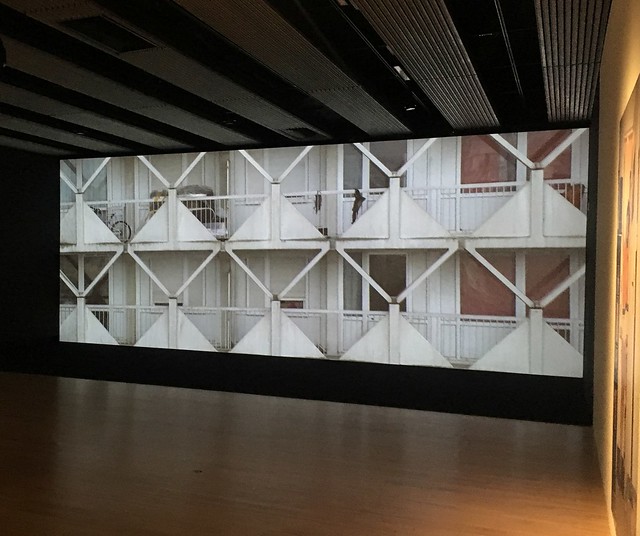
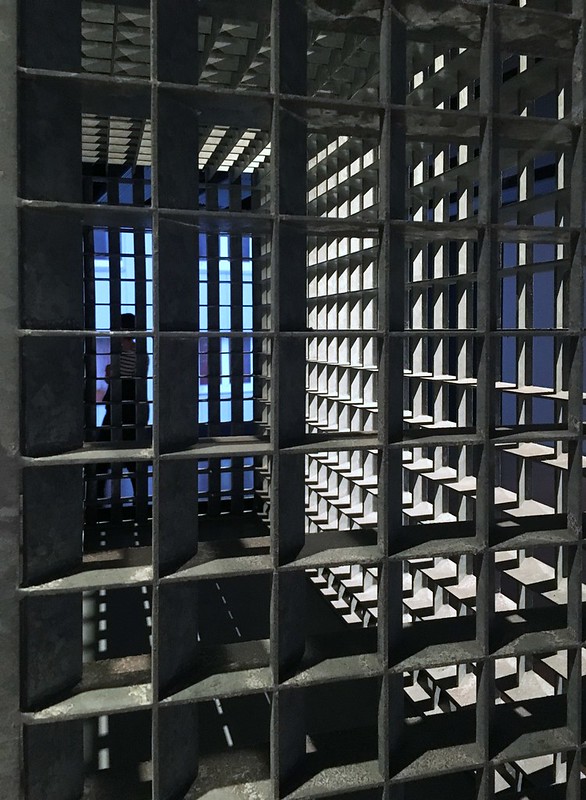
The experience of viewing the two shows was significantly different, Diane Arbus involved reading glasses and nose-to-glass scrutiny; Attia was your varifocal panorama viewing. Yep, that’s my Mk I eyeballs not up to much these days.

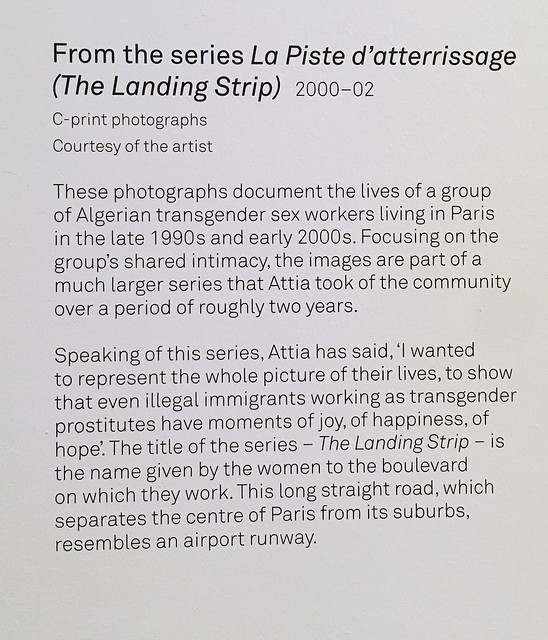
Entering the Diana Arbus we weren’t wished a good day or enjoy the exhibition, we were told quite firmly “no photography”. However in the Attia exhibition you can take photographs as long as you don’t use flash they said, so with the iphone duly blessed we snapped some lovely flicks of this skilfully staged show.

The thing that leads to those different rules and regs in the two shows lies in the ownership of the art. Nearly all the Arbus images were lent by institutions, donated by trusts or owned by collectors whereas the Attia exhibition attributes ownership as “courtesy artist”, the art (mainly) came from the artist himself.

It boils down to control, or is it paranoia? Maybe they (owners, curators etc in general) don’t want the images to be misused artistically but you can’t help feeling that their key fear is unlicensed financial exploitation. It could be as simple as possessing your own wonky badly lit photo taken in the gallery makes you may be less inclined to buy the book. Art world savants seek to protect their return on their investment and mobile phone photography doesn’t ring the tills in the gift shop.
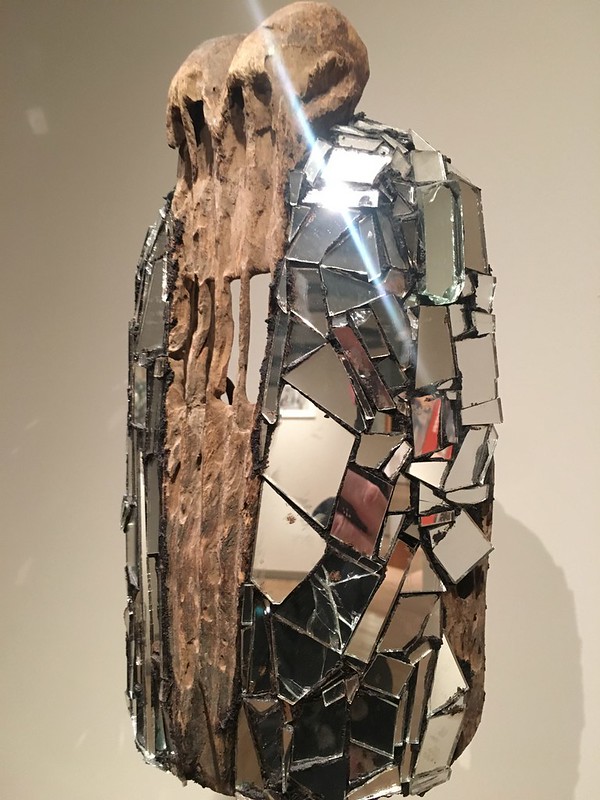
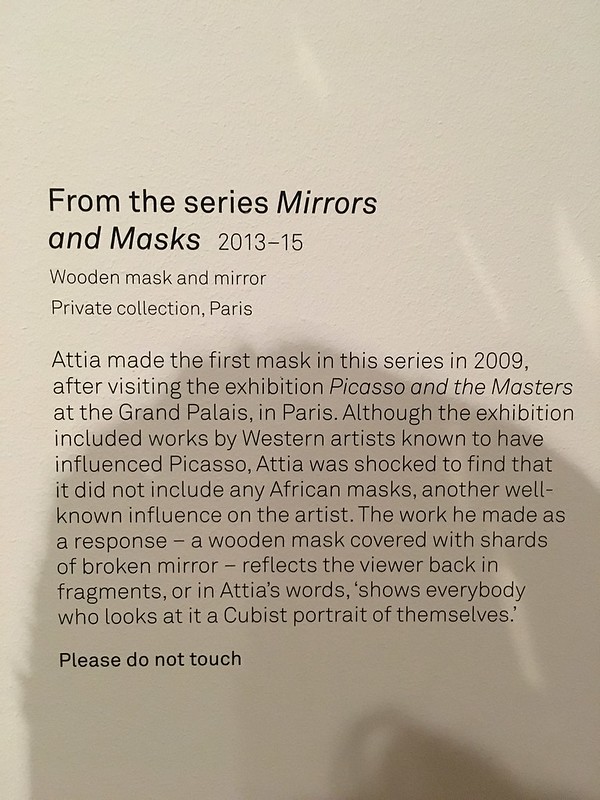
Attia on the other hand has a message or two to convey through his art and indeed has given detailed notes explaining the artowrks, so why block the normal natural channels for disseminating those meanings. Photography and social media is the very heart of sharing. It also helps to build the buzz, you are reading a few thoughts about two exhibitions,something that you can’t really call a review without doing serious bodily harm to the dictionary definition of that word, you the reader can only visualise one of the shows as it is illustrated with consensual images.
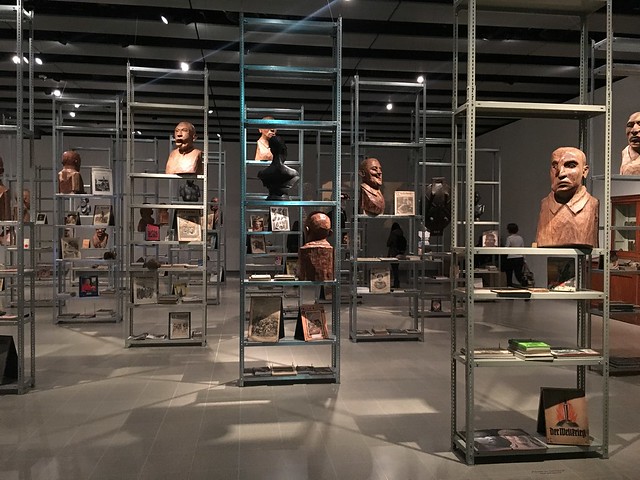
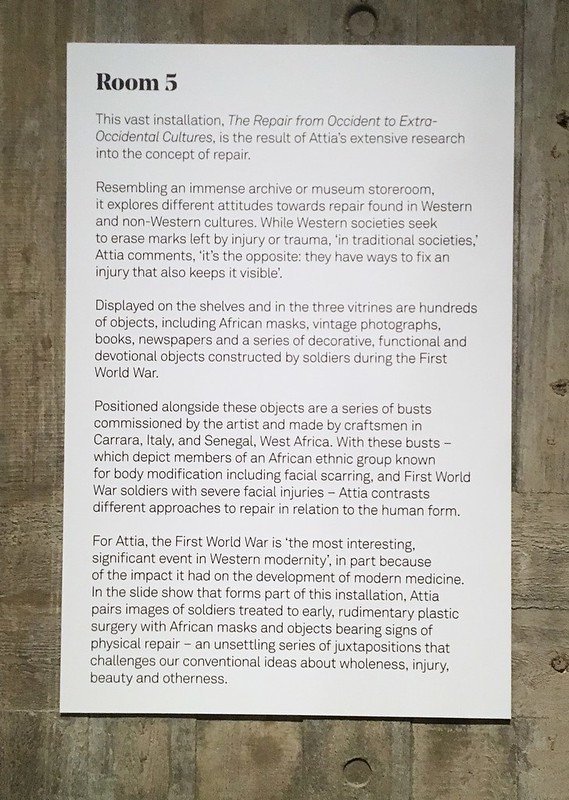
So back to how this reflects into the world of street art, the street art gallery is almost entirely artist curated. Notwithstanding the tiny proportion of commissioned street art out in the wild, the vast majority of street art is displayed courtesy of the artists themselves. Street artists deciding what to put up, where, on what kind of surfaces, when and how much. They start with full control but following the act, their control becomes almost zero and their art can be seen and photographed for free.


Control once the art is out on the streets is almost but not absolutely zero, artists can expect to retain rights to their image. Just because they share it on the streets does not mean they waive their legal copyright in the image, though that is a point you might need to discuss with a suitably specialised lawyer, should you really not want to not do anything interesting with your life ever again. Is it likely that fundamentally the legal rights of art world gallery artists on image control are pretty much the same as street artist have, those stupid controls imposed in the gallery are in affect your implicit agreement to respect that control in exchange for being allowed to enter the gallery. If you look closely, you will see that graffito bears very little resemblance to a qualified firm of lawyers so this could all be bollocks but the fundamental question is why the fuck do galleries feel compelled to prevent photography.

I thought this was one exhibition for the price of two but it turned out to be two for the price of one, I would definitely pay for Kadar Attia’s exhibition, maybe you can see why. Reading this photo free review fails to give you any reason to visit the Diane Arbus exhibition.
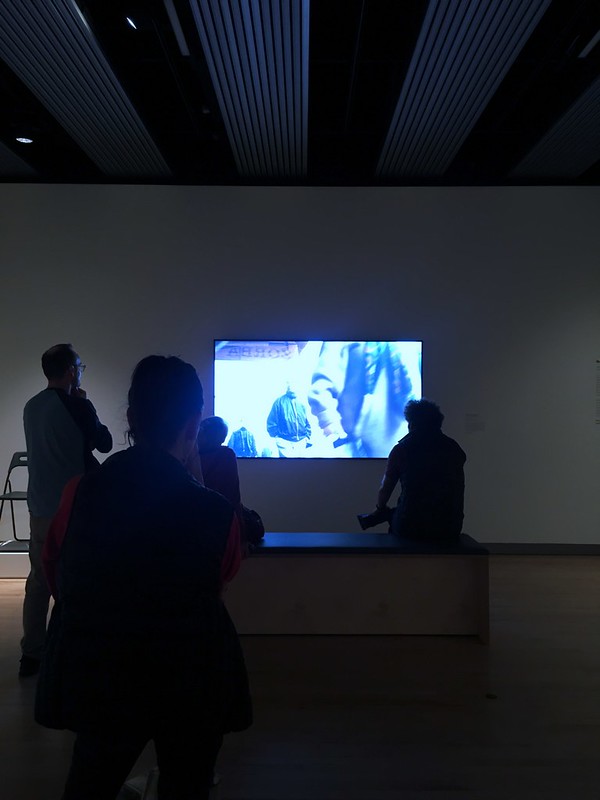
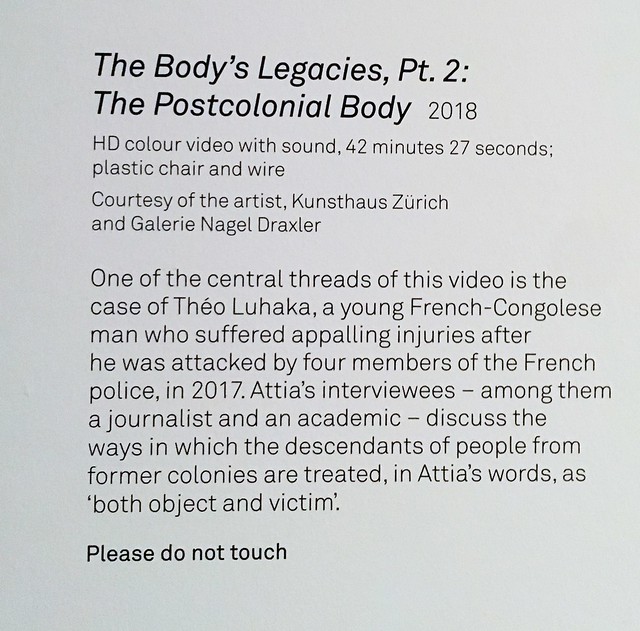
Finally, just to avoid any wrong impression, some of the Kader Attia art was catalogued as being held in private collections or institutions, one can only guess that it was a condition for inclusion in the exhibition that photography be permitted.

Reflecting Memory (2016) (phantom limb syndrome)
All photos: Dave Stuart
